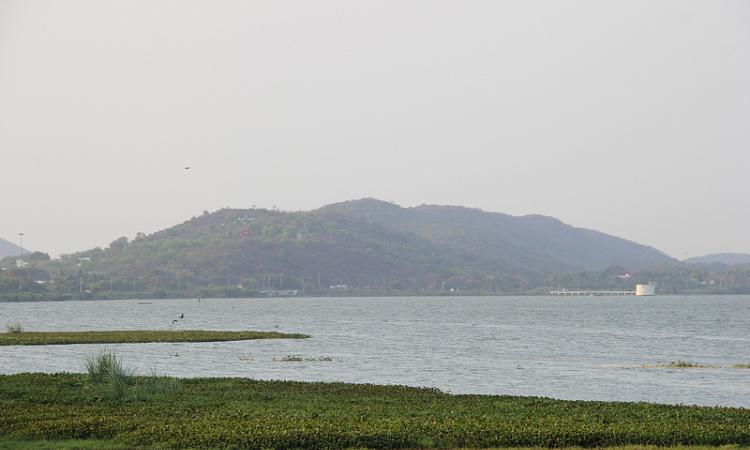
Our day-to-day dependence on fresh water is tremendous, whether for domestic or agricultural use. Theoretically, we know that it is a finite resource and that it can't be taken for granted but in practice, we do. India has an average rainfall of around 1150 mm but lets out nearly 1263 billion cubic metres of water into the sea unutilized.
The Water Resources Department at the Centre and the Public Works Department at the state level are responsible for planning and executing projects to effectively utilize the available water. Problems arise when departments are out of sync and put in place schemes that do not take into account the sensitivities of the region and the people who are dependant on it.
There is a vacuum in community governance when it comes to the management of fresh water resources as the emphasis is more on institutional governance. Therefore, sustainability of development becomes highly questionable. Integrated Water Resources Management (IWRM), which is nothing but the coordinated development and management of water, land and related resources, takes us one step closer to equitable sharing of resources.
River basin planning – need for decentralization
A river basin refers to the area drained by a river and its tributaries. This is generally considered as an ideal unit for comprehensive planning and management of the water resource with the help of an institutional framework. Since the nature and needs of river basins vary, it is ideal that the task of managing them is handed over to institutions in a decentralized manner.
A. Gurunathan from DHAN Vayalagam (Tank) Foundation (DVTF) feels that the problem stems from our inherent preference for large dam-centric institutional structures. “A bottom-up approach with the active involvement of local stake holders is essential for the effective planning and execution of any programme aimed at managing water resources in a region”, he says.
He feels that a “bottom-up” institutional framework should be put in place along with the constitutional administrative framework. This was one of the suggestions forwarded to the Planning Commission’s 12th Five Year Plan Working Committee on Water Governance. The DVTF is mainly involved in renovating local tanks and ponds with support from the local community.
Tank management
Statistics show a decreasing trend in the usage of tanks and canals for irrigation. Between 1950 and 1960, tanks were used to irrigate nearly 41.2% of the net irrigated area. Today, the number stands at 26.7%. An even more worrying fact is that there is no authentic record of the total number of tanks and the area irrigated by them.

The Tamil Nadu government, in an effort to save these tanks from disappearing completely, undertook a massive exercise to restore and manage these water bodies. The Irrigated Agriculture Modernisation and Water-bodies Restoration and Management (IAMWARM) aimed at improving the productivity of irrigated agriculture by improving irrigation.
Dr.K.Sivasubramanian from the Madras Institute of Development Studies feels that many villagers are unaware of the tanks surrounding their villages. Farmers, along with government agencies such as the PWD and the Forest Department need to be sensitized about tanks and their maintenance. Detailed investigations should be made to ascertain the number of such tanks and the extent of their irrigation cover in order to help organize the community around them.
From top to bottom
Dr. M.S.Swaminathan has rightly pointed out that any crisis in agriculture would adversely impact the economy. This is a logical extension of the fact that any change in the quantum and timing of irrigation would impact agricultural productivity and thereby, farm income.
The need to involve the community in managing its resources, whether it is tanks or rivers irrigating their fields, is crucial. Establishing strong community institutions that can survive even after projects wrap up is, therefore, of utmost importance.
Sensitizing and organizing villagers to manage their water through setting up Water User’s Associations and Self-help groups is the first step in bringing about the transition from the top to the bottom.
/articles/managing-tanks-bottom-approach